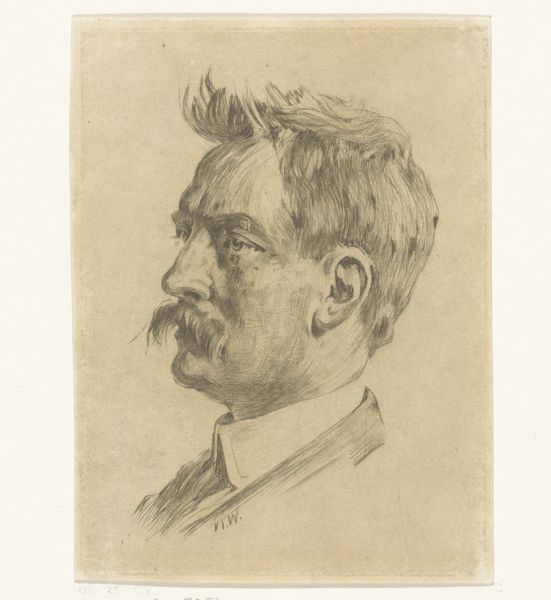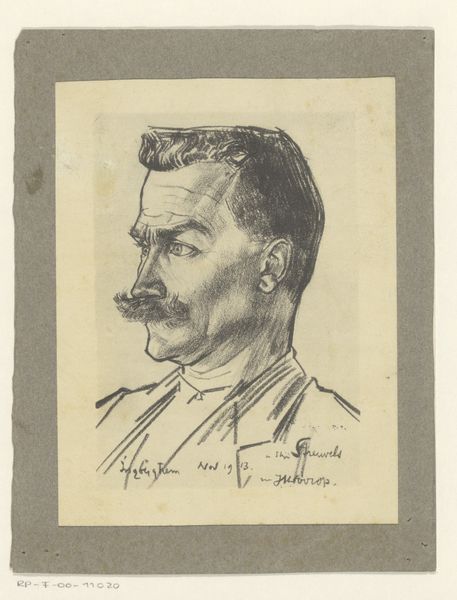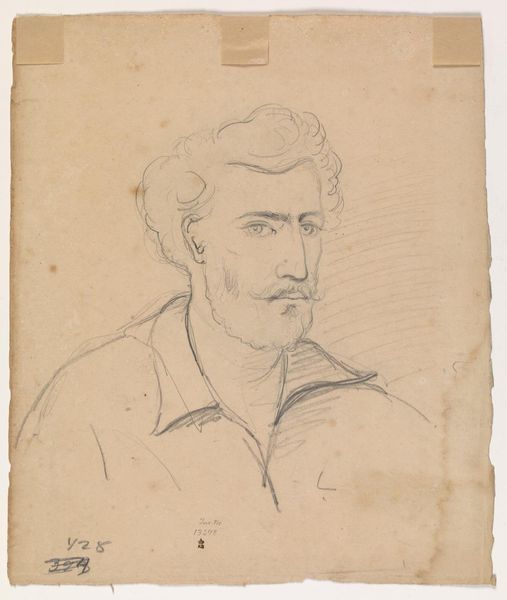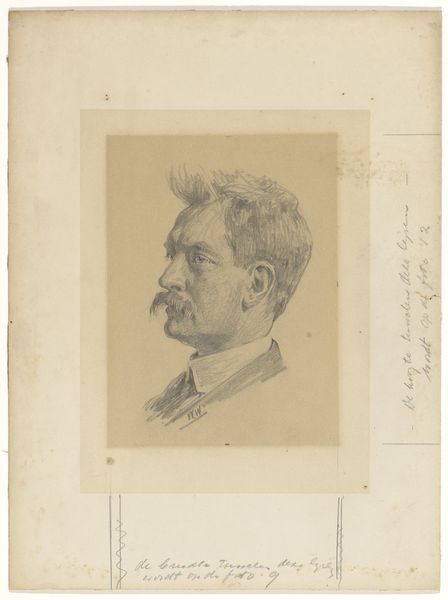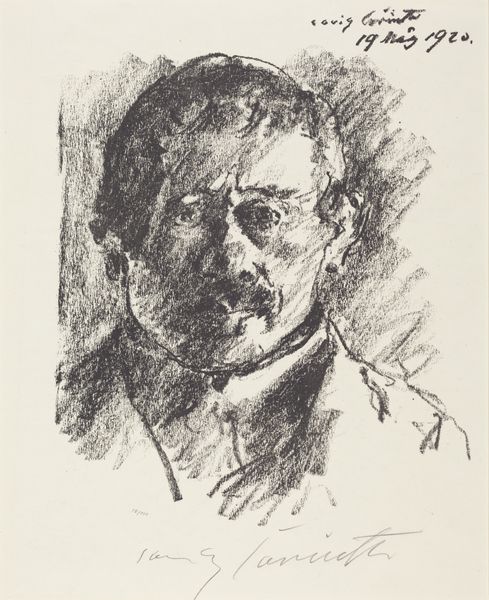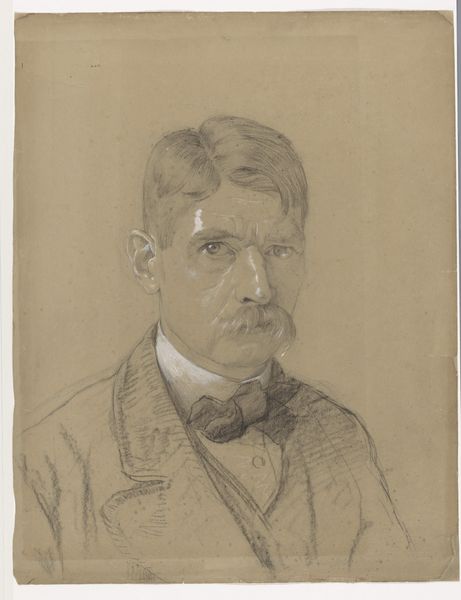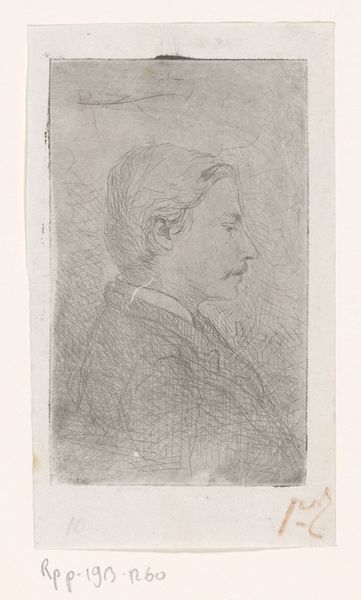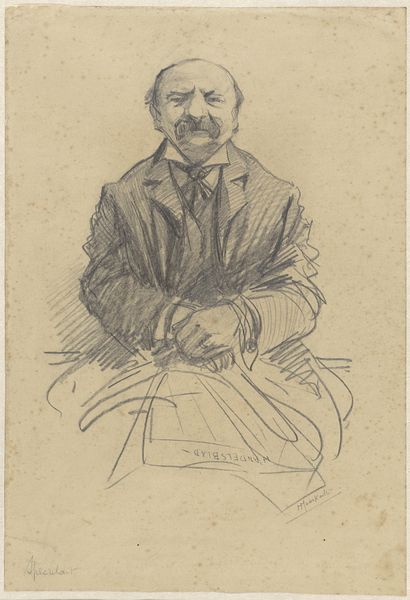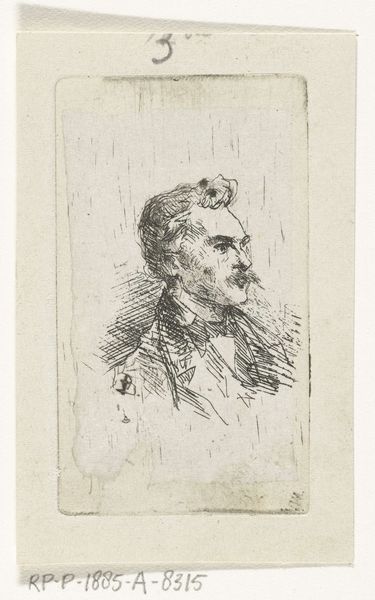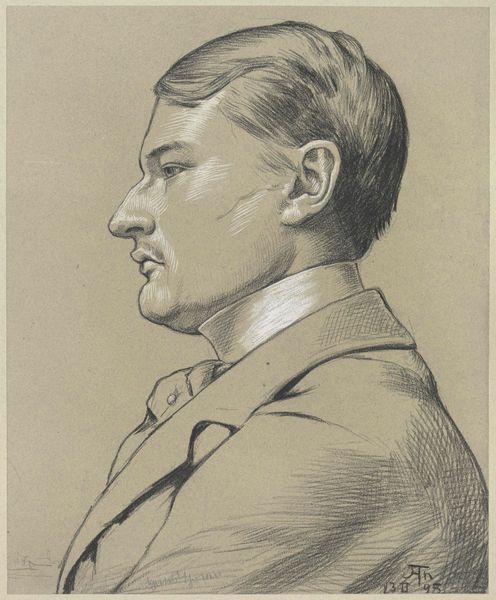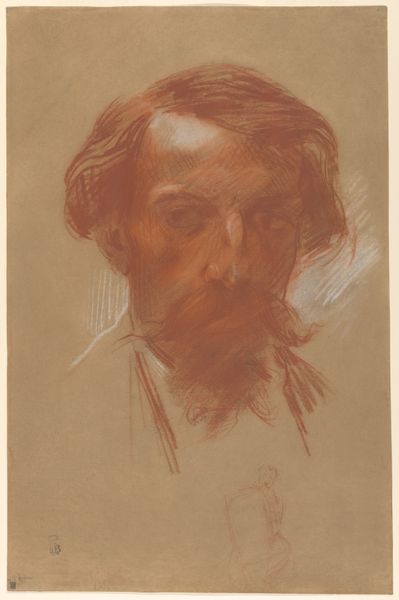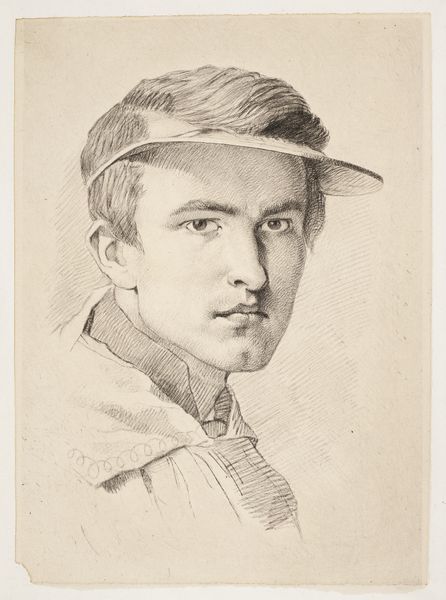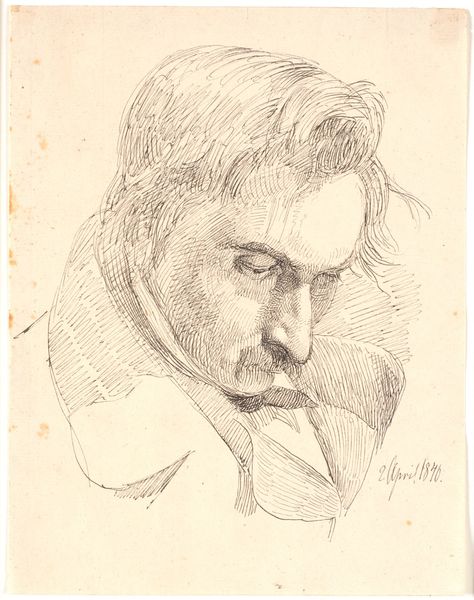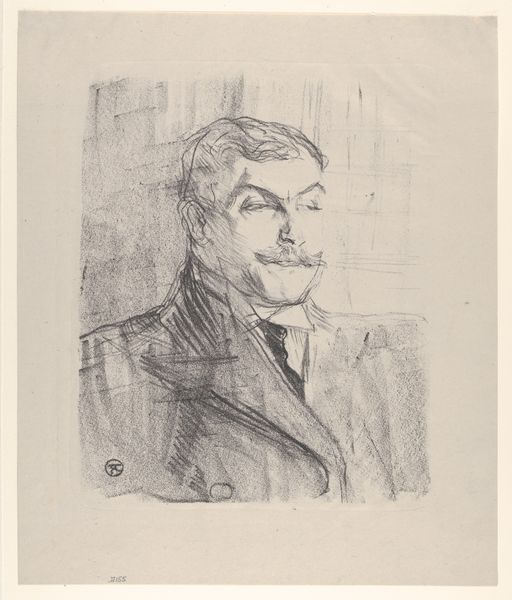
Profilportræt af kunstnerens bror, muligvis den senere krigs-minister 1838
0:00
0:00
drawing, ink
#
portrait
#
drawing
#
figuration
#
ink
#
romanticism
#
line
#
academic-art
#
realism
Dimensions: 146 mm (height) x 108 mm (width) (bladmaal)
Curator: This is Johan Thomas Lundbye’s “Profile Portrait of the Artist’s Brother, possibly the later War Minister,” a drawing executed in 1838. Editor: It's a delicate profile, all rendered in ink. You immediately get the pensive mood, the subject’s brow is slightly furrowed. There’s a wistful quality. Curator: Lundbye captured the burgeoning Romantic spirit so well. Even in this seemingly straightforward portrait, there's an exploration of interiority, a very palpable sense of longing that’s coded into pose and gesture. It speaks volumes, silently. Editor: True, but I'm more drawn to the hatching. Notice how carefully Lundbye builds up tone using only lines? And the paper, it seems to have browned over time; that aging gives another dimension of warmth, despite the inherent coolness of ink as a medium. What choices were made there in materials, what labor did they entail? Curator: Interesting how you focus on the tangible. To me, the real fascination resides in how Lundbye renders his brother – perhaps presciently – as a figure weighted down by the future he might face in the war ministry. The portrait taps into the anxiety of looming national conflicts, perhaps a symbol of personal ambition clashing with historical currents. Editor: Or perhaps, simply, he was a busy man! There's a kind of beauty in reducing that idea of "Romantic spirit" to very real labour, how the ink interacts with the page, what stories the wear and tear on this object tell. It's not just an image; it’s a made thing. Curator: Yet art surpasses pure functionality; here, even the angle of his brother's face reflects idealized beauty standards. His stoic expression speaks to masculine fortitude but also to the psychological complexity that characterizes this time in European history. Editor: Well, either way, viewing it in person does give a clearer idea of scale, technique and time. Curator: Indeed, it offers clues and cues regarding ways we respond emotionally to historical and individual concerns through portraits.
Comments
No comments
Be the first to comment and join the conversation on the ultimate creative platform.
